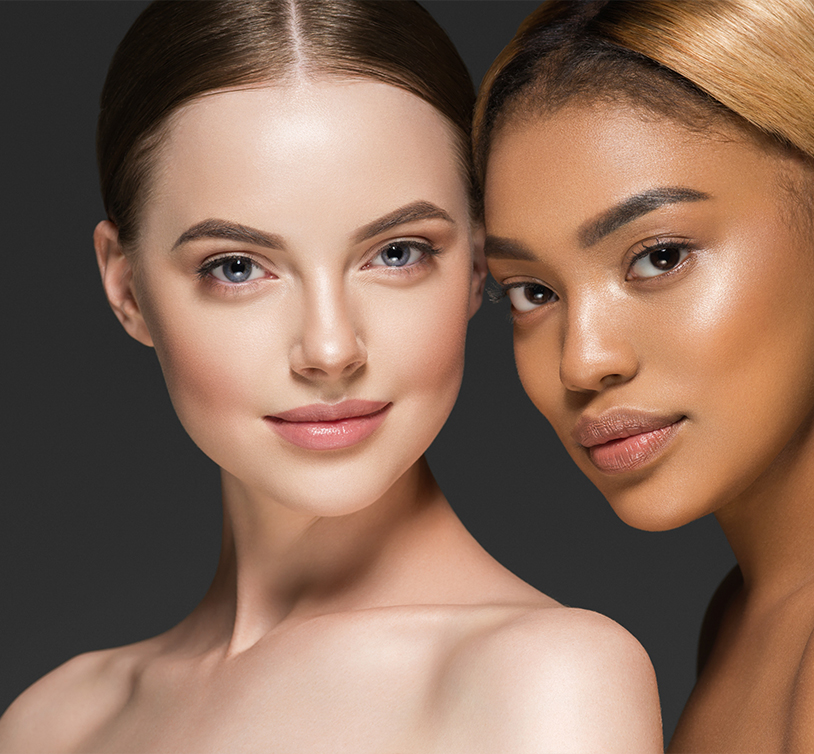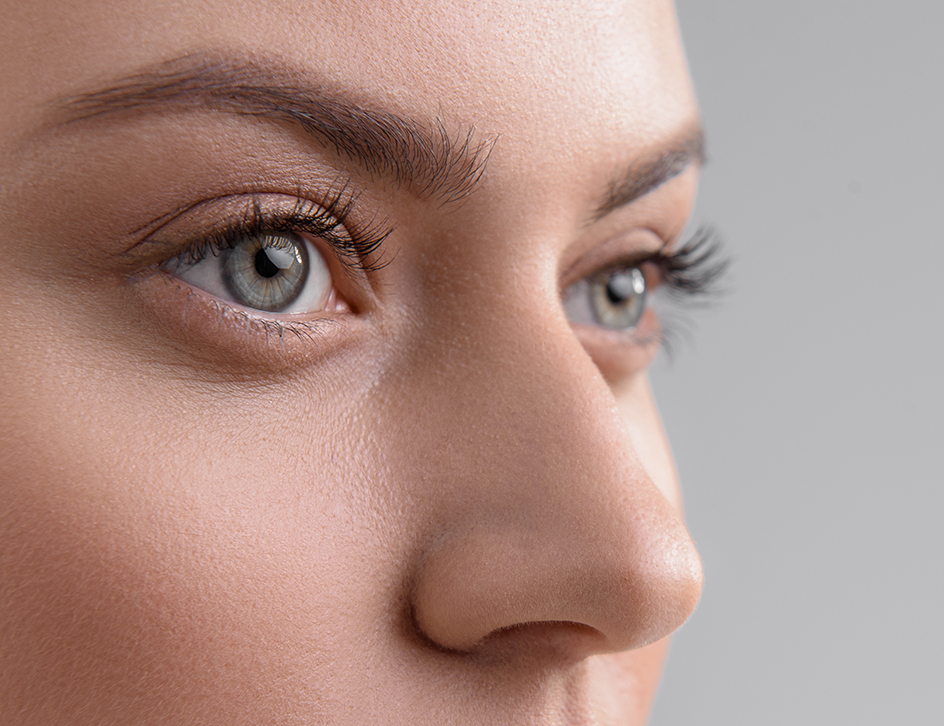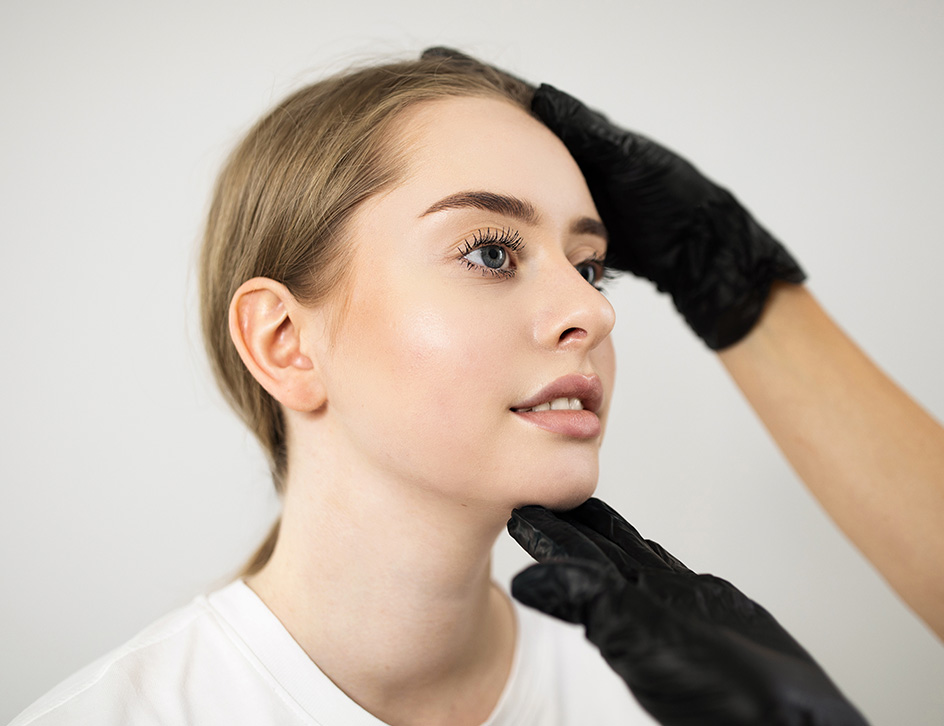Are you thinking about getting a nose job but aren’t really sure if you need one? Well, in that case, this article is perfect for you. Throughout it, we’ll talk about what a rhinoplasty surgery for the nasal bridge is all about. In addition, we’ll also discuss the causes behind a saddle bridge, the pre-operation, surgery procedures, and more.
To start off, know that getting a rhinoplasty is quite common in the United Kingdom (UK). In fact, a survey conducted by the British Association of Aesthetic Plastic Surgeons (BAAPS) highlights that there were a total of 31,057 cosmetic procedures performed in the UK in 2022. The report highlights that rhinoplasty procedures saw an increase of 67%.
Furthermore, a nose job procedure was the sixth most performed surgery for women and was at the top spot for men. When it comes to correcting a crooked nose by fixing the structure of nasal bones, you have the option of an open or closed rhinoplasty. However, before we get into that, let’s look at what saddle nose deformity is all about.

What is a saddle nose?
Saddle nose deformity is a condition that occurs when the bridge of the nose collapses. Such a condition leads to the loss of nasal height and can impact the appearance and facial balance. While the aesthetic impact of a saddle nose deformity is evident, you must be aware that such a condition can also lead to medical problems.
Those who have saddle nose deformity can suffer from breathing difficulties, and the condition, if prolonged or left unattended, may tend to worsen over time. That said, prior to exploring cosmetic surgery options, it’s essential for you to understand the common symptoms and causes associated with a saddle nose.

What causes saddle nose deformity?
As far as nasal bridge concerns go, anything that impacts your nasal septum can impact the nose shape leading to saddle nose condition. While the exact cause for a saddle nose condition varies among people, some general saddle nose causes may include:
1. Previous surgeries – if you have undergone a previous nose plastic surgery procedure for the correction of a deviated septum, it can lead to saddle nose deformity in severe cases.
2. Injuries – a damaged or fractured nose condition impacting the nose tip or cartilage can lead to a saddle nose condition and is oftentimes, one of the most common causes.
3. Spetal hematoma or abscess – a septal hematoma refers to a blood collection in the nasal septum, whereas an abscess is when an infection is collected in the septum. Both conditions hinder blood flow and can cause a saddle nose.
4. Infections – bacterial infections can affect both the bones and cartilage in the nose. Such an impact can hinder blood flow which, in turn, can cause you to have a saddle nose.
5. Substance abuse – taking cocaine, methamphetamine, or other drugs through the nose has many implications, one of which one of which is a saddle nose. Inhaling such substances through the nasal passage can damage the nasal bridge and overall nose structure.
6. Autoimmune diseases – such medical conditions may lead to nasal septum inflammation and hinder blood flow. If such conditions continue to worsen, they can lead to a saddle nose condition.

What are the common symptoms of saddle nose?
Before we dive into all you need to know about saddle nose reshaping surgery, you must be aware of the common symptoms of such a condition. Those who have saddle nose conditions must be aware that it can not only impact your facial harmony but can also cause medical problems such as breathing difficulties.
One of the most common symptoms is a change in the shape of the nose’s bone. Such changes often prevail in the form of a dip in the nose, which may become more prominent as time progresses. However, in cases of trauma or injury, a saddle nose shape may become prominent rather quickly. Some other symptoms of saddle nose may include:
● Discomfort
● Nosebleeds
● Chronic crusting
● Shape changes in the nose tip
● A hole in the nasal septum separates the nostrils
● A horizontal crease on the lower portion of the nose
Those who have a crooked nose bridge or saddle nose deformity may also experience snoring and sinus issues. In addition, things like a whistling sound from the nose when breathing or sleep apnea may also prevail.

What is a nose bridge rhinoplasty surgery?
A nose bridge rhinoplasty is a surgical procedure that can be performed either due to medical or cosmetic needs. This nasal bridge procedure can be used to address the shape and size concerns you may have regarding the nose.
Getting a nose bridge rhinoplasty can also help you correct a saddle or crooked nose, helping you achieve a more aesthetically appealing nasal profile. In addition, it can also help address various different concerns one may have regarding the shape of the nose.
Nasal bridge concerns addressed with rhinoplasty surgery
A nasal dorsum surgery is a procedure that can help you correct the nose shape and alleviate suffering induced by different medical conditions. Some of these conditions include:
● Crooked nose bridge – a crooked nose bridge is one that’s titled in either the right or the left direction. This can occur due to several factors, such as birth defects or traumatic nose injury. Plastic surgeons can correct a crooked nose using different nose bridge surgery techniques.
● Flat nose – this condition is one that occurs when the nose dorsum is not made of sufficient cartilage or bone causing the nose to have lower height. Such a condition can occur from an issue with a previous nose job, trauma, etc. This can, however, be fixed through nose surgery
● Nasal bridge – a broad nose bridge occurs when the upper bones are too wide, causing one to have a broad nose. A narrow nasal bridge can cause you to have a pinched nose. You can undergo bridge nose job adjustments to the nasal cartilage and nasal airways can be made to help you achieve the desired facial features.
● Dorsal hump – a dorsal nose hump is when there are irregularities with the bone and cartilage of the nose. A nose hump can be caused due to injury, genetics, or medical conditions like a deviated septum. A dorsal hump, depending on the underlying medical condition, can cause breathing difficulties but can be corrected via a dorsal hump reduction surgery.
● High nasal bridge – a high bridge makes the nose appear bigger and not in line with other facial features. However, it can be fixed with a nose bridge rhinoplasty procedure, where extra bones are removed from the nose to correct its posture.

What are the common nose bridge surgery options?
A nose job is a surgical procedure that one may choose to have for medical or cosmetic purposes. The nasal bridge surgery can be formed alongside other treatments such as chin augmentation and other nose procedures like nasal tip surgery or dorsum rhinoplasty.
As far as treatment options are concerned, patients can undergo either an open or closed rhinoplasty. The exact procedure for each option varies and both will be reviewed so as to select the best route suitable for your needs. Mr. Golchin has created a three-step process to help identify which option is suitable for you.
It’s essential to mention that the decision of whether to do an open or closed nose job varies from one person to the other. In addition, it’s based on different factors that include, but are not limited to:
● Skin thickness
● Nose structure
● Expected results
● Current condition
● Medical history

What is the pre-operation procedure for a bridge of the nose surgery?
Mr. Golchin has a comprehensive preoperative procedure that helps him understand your desired results, current conditions, and medical history. The procedure is divided into three stages: consultation, medical history review, and examination. During your initial consultation, Mr. Golchin talks to you about any nose bump or deformity concern you have and their impact on your facial features.
He also asks you to describe any prominent nose discomforts you may be experiencing. The aim of this consult is to determine suitable surgery options for your nasal structures and to set realistic expectations about the results of the nose surgery. Afterwards, he thoroughly reviews your medical history which will helps him to identify the best option for you.
It’s important for you to know that other factors, such as the shape, thickness, and size of the nasal bones and cartilage, can also impact such considerations. Once your medical history is reviewed, Mr. Golchin may require that you visit your general physician for any X-rays or necessary blood work. He will also provide you with preoperative instructions and necessary prescriptions.
In addition, you will also receive a list of medications that you need to avoid. Mr. Golchin decides whether an open or closed nose job is right for you based on your individual case.

What is the surgical process for a nose bridge rhinoplasty?
The exact procedure for a nose job depends on whether you’re getting an open or a closed nose bridge rhinoplasty. Prior to the start of the actual surgery, you will be given general anesthesia. However, you may be given local anesthesia combined with intravenous (IV) sedation, and the surgery will commence when you are fully sedated.
Open nose job
If Mr. Golchin has recommended that you get an open procedure, he will make a small incision under the nasal tip near the nostrils. The small incision Mr. Golchin makes, as part of the open nose bridge procedure, access to the underlying structure of the bridge of the nose.
This allows him to correct narrow nose bridge or broad nasal bridge irregularities, causing you to have a crooked or saddle nose. The same method can be used during tip rhinoplasty to correct nasal tip irregularities.
This process helps correct the nose dorsum and allows you to have a straighter nose, but it can scar tissue. That said, know that Mr. Golchin only uses this process when achieving a smooth nasal profile is challenging due to the nose structure.
Closed nose job
During a closed nose job, small incisions are made inside the nose allowing Mr. Golchin to have more accurate control. Once the incisions are made, he begins to sculpt the inner structure of the nose bridge.
This is done to fix both major or small precise fractures and helps you improve breathing and appearance. However, you must know that the extent of sculpting which can be done depends on the nasal structure and your unique medical conditions.
Cartilage grafts during the procedure may be used. Know that cartilage grafts are placed inside the nose to strengthen the nose. Once the process is complete, he applies a plaster to help protect and maintain the shape of your nose.

How long is the recovery process?
Before we get into details of the recovery process, know that both the open and closed nose jobs can be used for:
● Tip rhinoplasty.
● Revision rhinoplasty.
● Removing excess cartilage.
● Botched reduction rhinoplasty.
● dorsal hump removal surgery.
In addition to the surgical procedures, dermal fillers may also be used. The use of dermal fillers is a non-surgical process where gel-like liquids are injected into the nose to correct shape-related irregularities and the recovery does not require pain medication.
As far as the recovery process is concerned, younger patients and older ones, depending on their health, may recover in around two weeks. However, it’s better to avoid physical activities that cause strain for up to six weeks.

Final Thoughts
A rhinoplasty in London has become quite a common procedure. Some choose to undergo the procedure for cosmetic reasons, while others may have medical conditions that require it. In addition, some individuals may require a rhinoplasty as part of a revision surgery.
The procedure can be performed using an open or closed approach and can be used to improve appearance or alleviate suffering from certain conditions. However, it’s important to remember that the exact approach and outcomes vary from person to person.
Reach out now and learn more about the right options for you!

RHINOPLASTY
Useful Information:
Crooked Nose Rhinoplasty: A Comprehensive Guide | Do you need a rhinoplasty nose bridge surgery? | Dorsal Hump Rhinoplasty In London: Here’s What You Need To Know | Understanding rhinoplasty as a means of treating a Big Nose: What to expect | Unlock facial harmony with our bulbous nose rhinoplasty | Reclaim your beauty and breathe easy with our rhinoplasty for broken nose
I was very nervous about getting lip fillers for years, but I got recommended to Mr Golchin and I cannot recommend him enough! He made me feel at ease about the treatment and gave me exactly what I wanted! It was painfree and my results are amazing! – Sarah
SarahI have been attending Mr. Golchin at his clinic in Dublin for Botox & Fillers for quite a few years, with great results. I am never concerned about trying fillers in any new areas of my face or trying any new treatments suggested, as I have complete confidence in Mr. Golchin and his team. It’s very important to me to achieve a natural result while still noticing an obvious improvement and I am never disappointed. – Michelle
MichelleI contemplated rhinoplasty for a number of years and after extensive research I finally decided to go ahead with it in August 2017. To say it was a decision not taken lightly would be an understatement. I wanted the best results and the best surgeon and I can honestly say I got both. Mr Kambiz Golchin is a true professional and perfectionist and it is clear he takes great pride in his work. Mr Golchin established exactly what I wanted and delivered, surpassing my expectations. Bex
BexI had decided many months ago to get rhinoplasty and had since visited a number of the top surgeons in London, after being dissatisfied a friend referred Mr Golchin. From start to finish, including my pre operative care to my end result I could not be happier and would highly recommend Mr Golchin as a wonderful surgeon who has changed my life and I could not be happier with my new nose. – cmbrowne
C Browne

